V33 – Come Together
Collaboration, like God, is in the detail. Anna+Elena=Balbusso, Marco Lawrence, Chie Chihiro and Giulia Garbin have created collaborative work across illustration, print-making, limited run books and ceramics. In these extracts from the full article in Varoom 33 they share their thoughts and experiences on collaboration with Derek Brazell.
CHIE CHIHIRO are sisters working in both illustration and ceramics. They are based in London, UK and Saga in western Japan.
VAROOM: Do you believe that being sisters helps you to work closely together?
CHIE CHIHIRO: Yes, I believe so. Because we had many fights and disagreements when we were growing up, we seem to have gotten that all out of the way by now. We can now just be ourselves when working together, which gives us lots of freedom and relaxed minds for our inspiration.
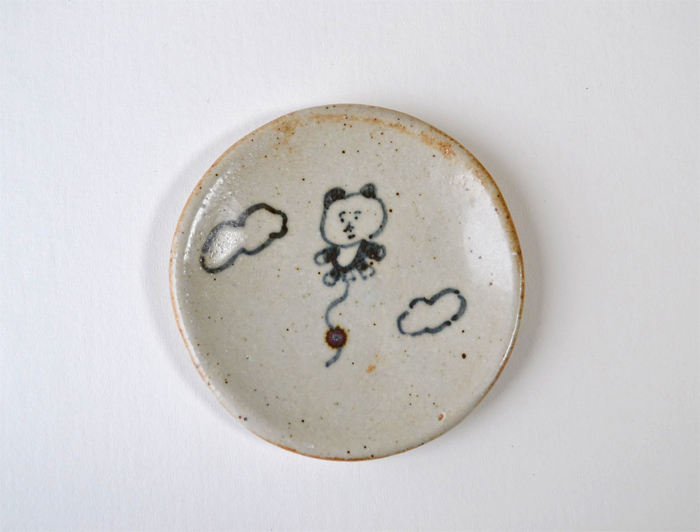
hand painted ceramic by Chie Chihiro
VAROOM: And describe how you work together, and come up with ideas.
CC: For any project, we always discuss our initial thoughts and ideas in the first meeting. There is no real formula we stick to, other than any suggestion is open for discussion, and more often than not, we will progress an idea from this initial get together.
Once we have discussed and agreed on an initial idea or concept, we usually then decide which of us is most suited to lead on this particular project. So, for each individual project we work on, one or the other of us will usually take charge.
The person in charge of the project will be the main point of contact with the art director. However, whenever possible, we always prefer to meet them in person as a team. This allows a real understanding and expectation of what’s required of each other, and helps the project progress.
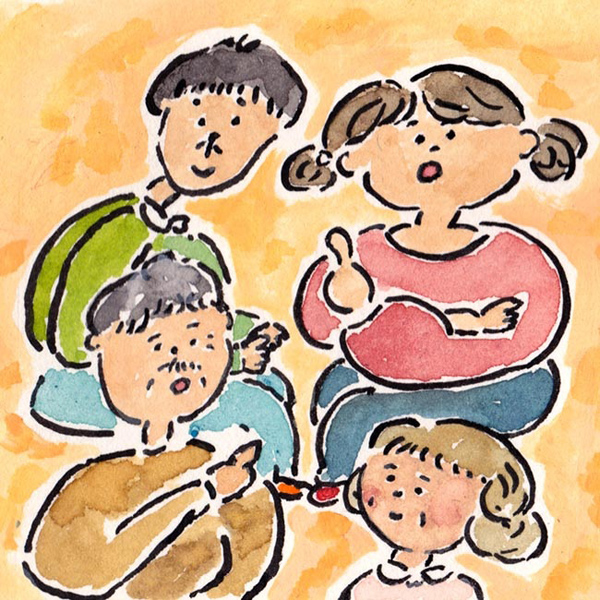
Illustration, Chie Chihiro
Milanese identical twins Anna+Elena=Balbusso are multi-award winning illustrators whose clients include The New York Times, The New Yorker, Reader’s Digest and le Figaro Group. They have illustrated over 40 books from children’s books to sci-fi.
VAROOM: What do you believe are the benefits, and positive aspects, of collaborating together?
ANNA+ELENA=BALBUSSO: Our choice is to sign all projects together. There is a lot joy in sharing the credit. Our job requires a lot of concentration and solitude, we don’t make images produced in series, but we create tailor-made artworks designed exclusively with extreme attention to detail often using time-consuming techniques. We cannot delegate our work process to others. We share the credit and successes but also the difficulties and fatigue. Two heads are better that one, we are lucky!
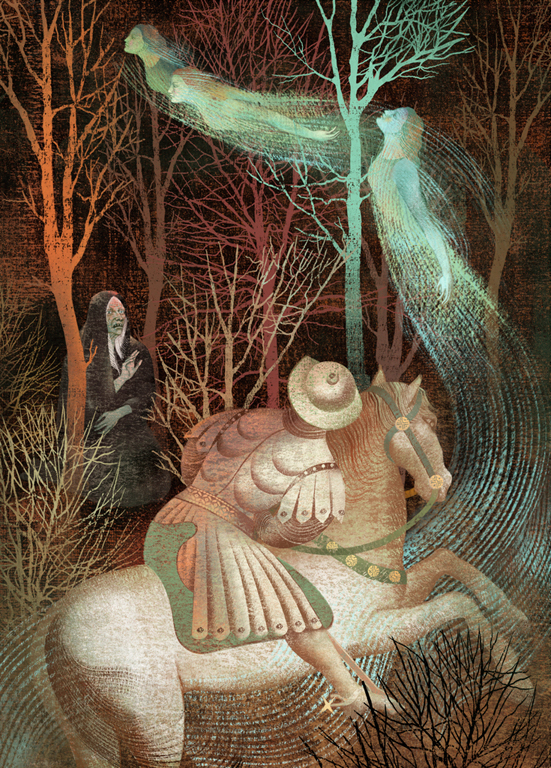
“The Wife of Bath’s Tale”. “The Canterbury Tales” by Geoffrey Chaucer illustrated book published by Black Cat Publishing in 2014
VAROOM: If disagreements come up, how do you manage those?
ANNA+ELENA=BALBUSSO: Our personalities complement each other. There is no competition between us. It would not be possible to work together if one dominates the other.
We talk a lot before starting a new project but if we disagree about something, we can discuss and mediate. At the end of each project we must be convinced of what we did. We must be humble and always listen to the other. The comparison is key to improving. In all phases of the work we consult between ourselves. The comments of one of us on the process work of the other one are fundamental to achieve the best result.
Giulia Garbin is an illustrator, designer and art director from Italy based in London. Illustrators may know her design work from the Miguel Angel Valdivia’s illustration magazine, Le Petit Néant. Garbin collaborated with the team at Print About Me and the letterpress workshop ‘Archivio Tipografico’on the Tipi Di Torino limited edition book, a visual homage to the current typographers of Turin, which she illustrated with lino prints.
VAROOM: How did each of you get involved with the various parts of the project?
GIULIA GARBIN: The images where inspired by the material collected during my first visit there, Archive Tipografico helped me a lot with finding historical photographs of some of the locations illustrated in the book. But apart from the stories, we couldn’t find many visual references so a lot of it had to be imagined. The text was written by myself, but Stefano Riba (from Print About Me) helped with the editing and adding the locations around the city. We wanted to have them quite short as we liked the idea of telling short tales and curiosities about a city and its almost forgotten profession.
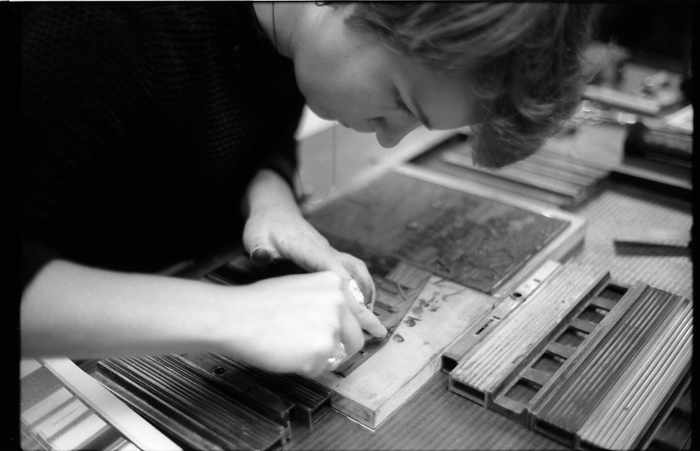
Garbin at Archivio Tipografico, Turin, Ital. Photography by Giovanni Simoni
VAROOM: What do you believe are the benefits, and positive aspects, of collaboration? And any challenges?
GG: I think that the most interesting work I’ve done comes out from collaborations. The best ones were made with people that have completely different backgrounds and skills from mine. Working with people who have different understanding of materials and technologies can be really exciting, as the way in which they see the brief can be very different from myself. It also means we can all be a part of a project that would be impossible for us to do on our own. The biggest challenge is being able to coordinate your side of the work with that of the others.
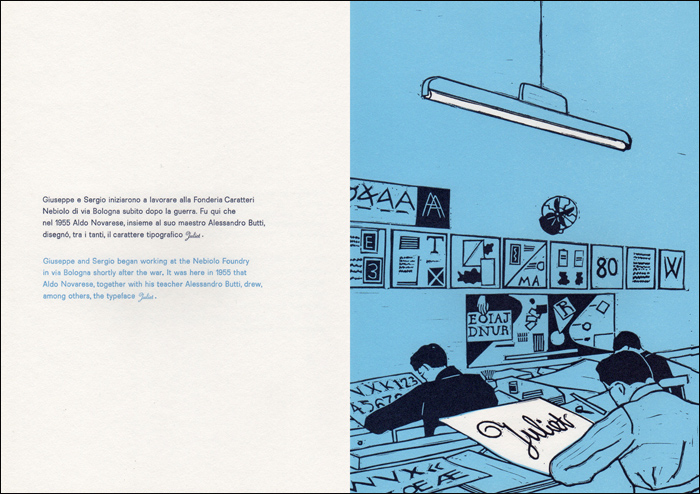
Spread from Tipi Di Torino
British-born printmaker Marco Lawrence currently lives in New York City where he is studio manager at New York’s acclaimed printmaking studio the Lower Eastside Printshop. Lawrence prints commercially for an internationally renowned selection of artists, museums and institutions.
VAROOM: Are there instances where your participation takes a collaborative print in an unexpected direction?
Marco Lawrence: I think that where as a good printer’s hand should be invisible in the final work, a true master printmaker can sometimes have an active and creative role in the aesthetic of the final print. Frequently, a client’s imagery will present technical challenges to production, and the master printer’s solutions can add layers of interest and content to the finished work that weren’t necessarily present in the initial design. The workflow of silkscreen printing, in particular, demands that these changes be developed and refined before editioning. This is why proofing work and maintaining a really good dialogue with the artist or illustrator is essential for the collaboration. They must trust in not just your skill as a tradesman but also that you have the best interests of their work at heart as a fellow creative.
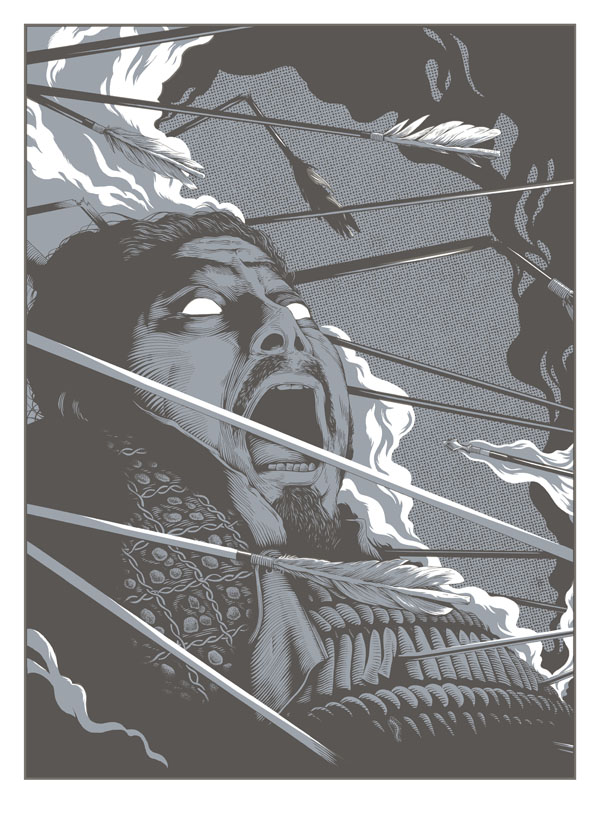
Throne of blood by Joe Wilson, 2014. Printed with Marco Lawrence
VAROOM: If disagreements over the creation of a print come up, how do you manage those?
ML: Inevitably it’s not all plain sailing and ink orgies. Misunderstandings do occur, often if the artist or illustrator is unfamiliar with the limitations of the medium. In those instances it’s the printer’s responsibility to manage the client’s expectations, educate where necessary and lead them toward the best resolution of their work.
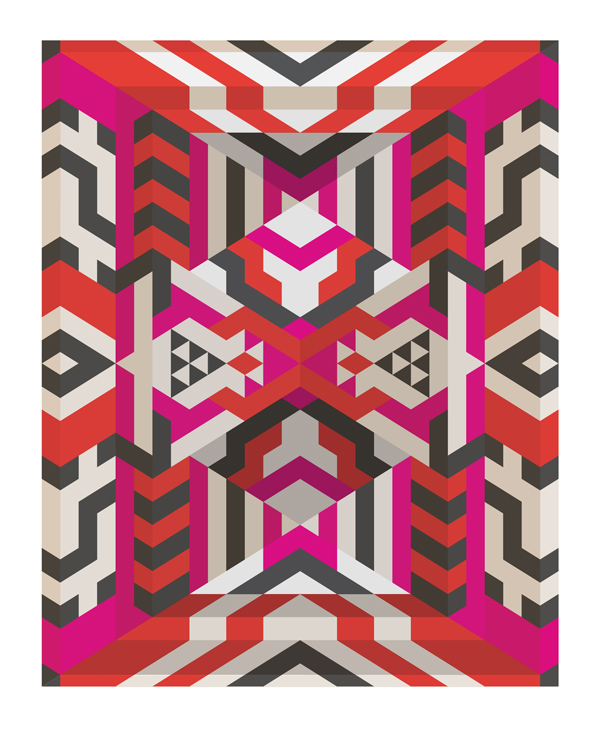
K’aak chi, print by Marco Lawrence, 2016
The full article is in Varoom 33 the Collaborators issue, which is available here
Back to News Page
